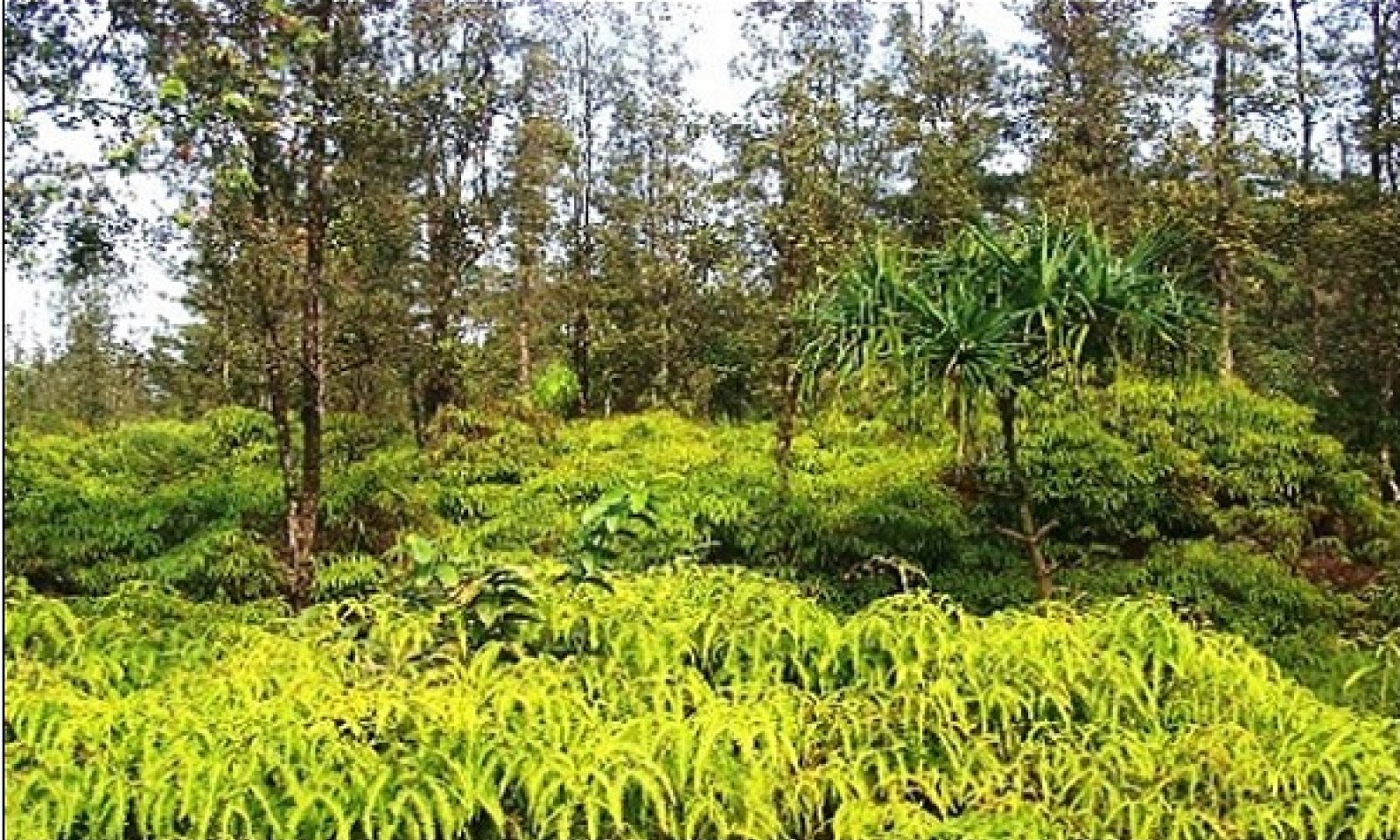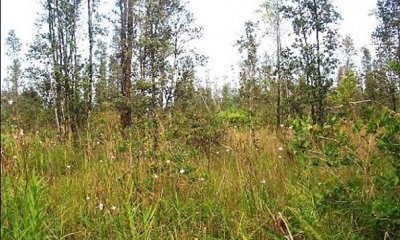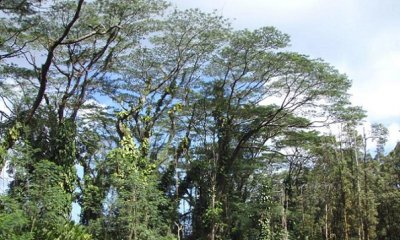
Pahoehoe Organic Fern Savanna
Scenario model
Current ecosystem state
Select a state
Management practices/drivers
Select a transition or restoration pathway
- Transition T1A More details
- Restoration pathway R2A More details
- Transition T2A More details
- Restoration pathway R3A More details
-
No transition or restoration pathway between the selected states has been described
Target ecosystem state
Select a state
State 1
Reference State



Description
The Reference State consists of one community phase.
State 1 can transition into State 2 Cleared and Abandoned by clearing and abandonment or by wildfire. Ripping and crushing of the underlying pahoehoe by heavy equipment creates soils called Arents, in which rock fragments are comminuted into smaller pieces down to sand size. This action causes loss of organic matter by oxidation, but creates fine, sand-filled interstices between rocks that provide a rooting medium in which to establish plants. Abandoned Arents are very susceptible to weed invasion.
Submodel
Description
This state is comprised of one community phase. It occurs in abandoned fields and in areas that have burned. Widespread, human-caused fires historically have been common in this community.
Restoration to State 1 Reference may be possible by excluding ungulates, creating a firebreak, controlling invasive plants, and reintroducing uluhe ferns. Propagation of uluhe is very difficult. However, it might be accomplished by placing rotting logs under uluhe thickets to collect spores, allowing the spores to develop, and then placing the logs in the restoration area.
This state transitions to State 3 Exotic Tree Invaded when fire is absent long enough (maybe 10 to 20 years) to allow introduced tree species to grow.
Submodel
Description
This state consists of one community phase. It transitions from State 2 Cleared and Abandoned when fire is absent long enough for a dense tree canopy to develop, possibly within about 20 years. Despite the shallowness of the soils, many introduced tree species are able to establish. Their potential densities and sizes are not yet known, but dense stands with very tall trees currently exist. It is conceivable that tree roots may extend through cracks in the pahoehoe to reach buried volcanic ash soils beneath.
This state might restore itself to State 2 Cleared and Abandoned by occurrence of an intense wildfire during a dry period.
Submodel
Mechanism
The Reference State can transition to State 2 Cleared and Abandoned by wildfire or by clearing with heavy machinery, followed by abandonment and invasion by introduced plant species. If the cleared site is not near a weed seed source, native uluhe and native trees can reclaim the site without human intervention.
Mechanism
It may be possible to restore State 2 to State 1 Reference by excluding ungulates, practicing weed control, and reestablishing dense stands of uluhe. Any remnant uluhe must be preserved the site. Uluhe fern is difficult to propagate and relocate to sites from which it is absent. It is possible to naturally propagate uluhe by placing mossed-covered pieces of tree wood beneath uluhe thickets to collect spores, allowing the spores to develop into ferns, and then moving them to the restoration site.
Uluhe is a very competitive, fast-growing plant that can reclaim cleared or burned sites. If the local weed seed bank is not abundant, uluhe will naturally recover a site, eventually allowing native trees to emerge through it. Where some weeds are present, it has been demonstrated that moderate weed control efforts can allow uluhe to regain dominance of a site (personal communication, Fred Stone, UH-Hilo, retired).
Mechanism
State 2 may transition State 3 Exotic Tree Invaded when lack of wildfire allows introduced trees to survive and grow to large size and/or dense populations.
Model keys
Briefcase
Add ecological sites and Major Land Resource Areas to your briefcase by clicking on the briefcase (![]() ) icon wherever it occurs. Drag and drop items to reorder. Cookies are used to store briefcase items between browsing sessions. Because of this, the number of items that can be added to your briefcase is limited, and briefcase items added on one device and browser cannot be accessed from another device or browser. Users who do not wish to place cookies on their devices should not use the briefcase tool. Briefcase cookies serve no other purpose than described here and are deleted whenever browsing history is cleared.
) icon wherever it occurs. Drag and drop items to reorder. Cookies are used to store briefcase items between browsing sessions. Because of this, the number of items that can be added to your briefcase is limited, and briefcase items added on one device and browser cannot be accessed from another device or browser. Users who do not wish to place cookies on their devices should not use the briefcase tool. Briefcase cookies serve no other purpose than described here and are deleted whenever browsing history is cleared.
Ecological sites
Major Land Resource Areas
The Ecosystem Dynamics Interpretive Tool is an information system framework developed by the USDA-ARS Jornada Experimental Range, USDA Natural Resources Conservation Service, and New Mexico State University.




